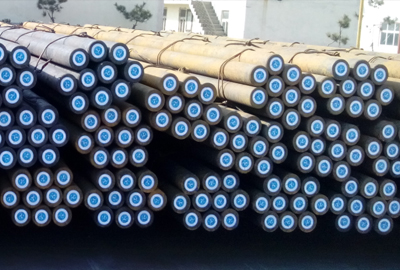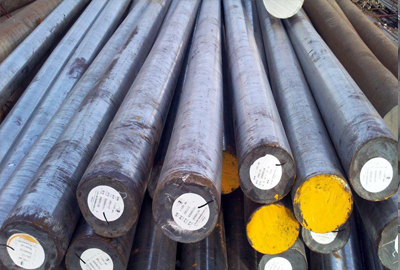Mat.No. 1.5122, DIN 37MnSi5
Short Description:
Designation by Standards Brand Name Ravne No. Mat. No. DIN EN AISI VMS135 707 1.5122 37MnSi5 - - Chemical Composition (in weight %) C Si Mn Cr Mo Ni V W Others 0.37 1.25 1.25 - - - - - - DescriptionStructural steel. Parts of high core stability and good toughness like gear parts etc. ApplicationsLow and moderately stressed components for vehicles, machines and engines. Physical properties (avarage values) at ambient temperatureModulus of elasticity [103 x N/mm2]: 21...
Product Detail
FAQ
Product Tags
Designation by Standards
| Brand Name | Ravne No. | Mat. No. | DIN | EN | AISI |
| VMS135 | 707 | 1.5122 | 37MnSi5 | - | - |
Chemical Composition (in weight %)
| C | Si | Mn | Cr | Mo | Ni | V | W | Others |
| 0.37 | 1.25 | 1.25 | - | - | - | - | - | - |
Description
Structural steel. Parts of high core stability and good toughness like gear parts etc.
Applications
Low and moderately stressed components for vehicles, machines and engines.
Physical properties (avarage values) at ambient temperature
Modulus of elasticity [103 x N/mm2]: 210
Density [g/cm3]: 7.85
Thermal conductivity [W/m.K]: 25.0
Coefficient of Linear Thermal Expansion 10-6 oC-1
| 20-100oC | 20-300oC | 20-500oC |
| 11.1 | 12.9 | 13.9 |
Continuous Cooling Transformation (CCT) Diagram
Click the image to enlarge the diagram.
Soft Annealing
Heat to 680-720oC, cool slowly. This will produce a maximum Brinell hardness of 217.
Normalizing
Temperature: 860-890oC.
Stress Relieving
Stress relieving to remove machining stresses should be carried out by heating to 120-200oC, holding for one hour at heat, followed by air cooling. This operation is performed to reduce distortion during heat treatment.
Hardening
Harden from a temperature of 820-850oC followed by water or oil quenching. Hardneess after quenching is 52-54 HRC.
Tempering
Tempering temperature: 480-60oC, air.
Forging
Hot forming temperature: 1050-850oC.
Machinability
Machining is best done with this alloy in the annealed or normalized and tempered condition. It can be machined by all conventional methods.
Corrosion Resistance
This is a low alloy steel and not a corrosion resistant alloy. Protective coating should be used.
Welding
The alloy can be fusion or resistance welded. Preheat and post heat weld procedures should be followed when welding this alloy by established methods.
Cold working
The VMS135 alloy may be cold worked, in the annealed condition, by conventional methods and tooling. It has good ductility.
Forms manufactured: Please see the Dimensional Sales Program.
Disclaimer
The information and data presented herein are typical or average values and are not a guarantee of maximum or minimum values. Applications specifically suggested for material described herein are made solely for the purpose of illustration to enable the reader to make his own evaluation and are not intended as warranties, either express or implied, of fitness for these or other puposes. There is no representation that the recipient of this literature will receive updated editions as the become available.
FAQ Content
![[0{7)7UAZ(]4W{5TSMC65Q7](https://www.htsteelmill.com/uploads/077UAZ4W5TSMC65Q7.png)






